Whale Shark is the largest fish species in the world. This large size not only makes it unique but also an interesting fish to study. We have gathered a complete set of Whale Shark Facts for Kids that will provide you with all the Whale Shark Information you need. We have answered all the questions that are frequently asked about the whale shark. You are going to learn about its name, scientific classification, anatomy, size, weight, diet, habitat, speed, lifecycle, reproduction, size comparison, range, migration, and other interesting information.
Whale Shark Facts For Kids
1. What Is A Whale Shark
- Whale Shark is the largest existing species of fish.
- Whale Shark is a filter-feeder, slow-mover, and is the largest existing non-mammalian vertebrate existing on the earth.
- Whale Shark belongs to the order Orectolobiformes, members of which are commonly called “Carpet Sharks” due to their resemblance with ornamented patterns of carpets.
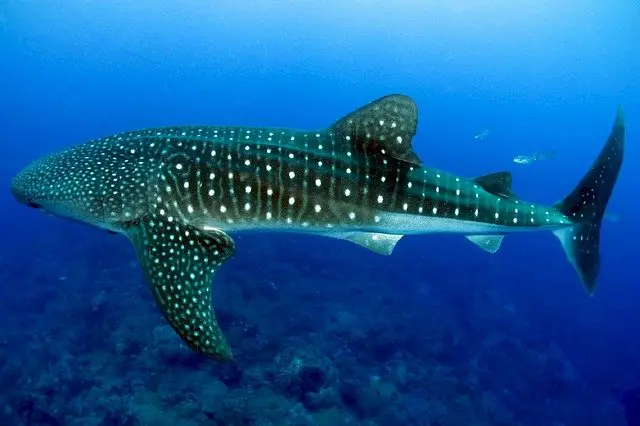
2. Whale Shark Scientific Name
- The scientific name of Whale Shark is “Rhincodon typus”.
3. Whale Shark Common Name
- The common names of Whale Shark in different languages are:
- “Whale Shark” in English
- “Chagrin” in French
- “Jinbei Zame” in Japanese
- “Dimero” in Spanish
- “Rekin Wielorybi” in Polish
- “Rauhhai” in German
- “Thimingal Sura” in Tamil
- “Tubario Baleia” in Portuguese
- “Yu Paus” in Malay
- “Walvishaai” in Afrikaans
4. Why Is A Whale Shark Called A Whale Shark
- A Whale Shark is called a Whale Shark due to its huge size like a whale, but not because it is a species of whale.
- It is also a filter-feeder like Baleen Whales.
5. What Does A Whale Shark Look Like
- A Whale Shark is a giant ocean animal that has a massive size like a whale.
- It has a grey body with a whitish belly.
- Its massively spotted skin looks like an ornamented carpet.
6. Is A Whale Shark A Shark
- Yes, Whale Shark is a shark as it possesses all characteristics of sharks.
7. What Makes A Whale Shark A Shark
- A Whale Shark has all the 33 characteristics of a shark.
- Some of the basic characteristics are:
- Cartilage skeleton
- Five pairs of gills (sharks must have 5 to 7 gills pairs)
- Unfused pectoral fins to the head
8. Is A Whale Shark A Mammal
- No, the Whale Shark is not a mammal as it is not a whale (whale is a mammal and their offspring are fed by the mother’s milk).
- Instead, the Whale Shark is a fish.
9. Whale Shark Classification
- Integrated Taxonomic Information System classified Whale Shark as follows:
| Kingdom : | Animalia |
| Subkingdom : | Bilateria |
| Infrakingdom : | Deuterostomia |
| Phylum : | Chordata |
| Subphylum : | Vertebrata |
| Infraphylum : | Gnathostomata |
| Super Class : | Chondrichthyes |
| Class : | Chondrichthyes |
| Subclass : | Elasmobranchii |
| Order : | Orectolobiformes |
| Family : | Rhincodontidae |
| Genus : | Rhincodon |
| Species : | Rhincodon Typus |
10. How Big Is A Whale Shark – Whale Shark Size
- Whale Shark is the world’s largest non-mammalian vertebrate.
- The estimated average size of an adult Whale Shark is about 32 feet (9.8 meters) and 20,000 pounds (9 tons).
- It can open its mouth about 5 feet wide.
- Some specimens of more than 59 feet (18 meters) have also been reported.
- In 1949, a specimen was caught in Karachi, Pakistan, which is still considered the largest verified specimen.
- It had a body length of 41.5 feet (12.65 meters), weighed up to 47,000 pounds (21.5 tons), and had a circumference or girth of 32 feet (7 meters).
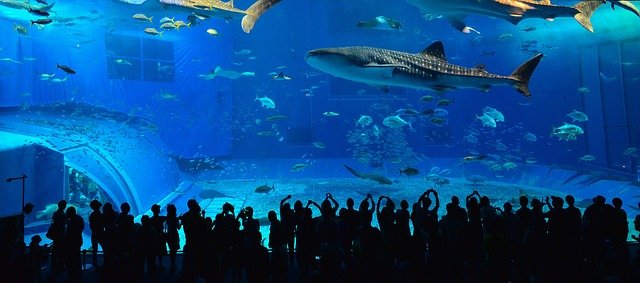
11. How Big Do Whale Sharks Get – Average Whale Shark Size
- The average size of an adult Whale Shark is estimated to be about 32 feet (9.8 meters) in length and 20,000 pounds (9 tons) in weight.
- Whale Sharks can grow up to 50 feet (15.24 meters) long and weigh 32,000 pounds (16 tons).
12. How Long Is A Whale Shark – Whale Shark Length
- The average length of an adult Whale Shark is approximately 9.8 meters (32 feet).
- Several specimens have been reported of more than 18 meters in length.
13. Whale Shark Compared To Blue Whale
| Whale Shark | Blue Whale |
| Largest fish | Mammal and largest animal on the earth |
| Weighs 16 to 20 tons and has a body length from 18 to 40 feet | Weighs about 200 tons and has a body length of about 100 feet |
| Has a flattened head and two sets of dorsal fins that are directed towards the back | Has a flat and broad head and tapered body shape |
| Has grey to brown skin color with spots among pale horizontal and vertical stripes | Looks blue underwater while bluish-grey outside water |
| Sexually matures at the age of 30 years | Sexually matures at the age of 5 to 10 years |
| Give birth once in 2 to 3 years | |
| The gestation period is unknown | Has 10 to 12 months gestation period |
| The newborn has 40 to 60 cm body length | The newborn has 25 feet body length and weighs up to 3 tons |
| Babies consume planktons | Baby consumes 600 liters of milk per day and gains 90 kg weight per day during the first year of its life |
| Lives from 70 to 100 years | Has a lifespan of about 80 years |
| Eats about 21 kg plankton per day | Eats about 40 million krill per day that weighs about 3,600 kg |
| Has a swimming speed of about 5 km/h when feeding | |
| Has an average speed of 5 km/h (3 miles per hour) | The normal swimming speed is 20 km/h and the fastest is 50 km/h |
| Found in tropical, warm-temperate, and open seas | It is found in all oceans except the Arctic Ocean |
14. Whale Shark Compared To Human
- Despite its huge size, a Whale Shark poses no significant threats to humans.
- A Whale Shark is a filter-feeder and can eat only plankton. Humans and other large-sized animals are not included in their menu.
- Whale Sharks are naturally gentle and sometimes allow divers to swim along with them.
- Fiona Ayerst, an underwater wild photographer, photographed Whale Sharks swimming closely with humans without posing any threat.
15. How Much Does A Whale Shark Weigh – Whale Shark Weight
- The average weight of an adult Whale Shark is about 20,000 pounds (9 tons).
- The heaviest Whale Shark had a bodyweight of about 47,000 pounds (21.5 tons).
16. Largest Whale Shark – Biggest Whale Shark In The World
- The biggest verified Whale Shark was caught in 1949, in Karachi (Pakistan) near Baba Island.
- It had a body length of about 41.5 feet (12.65 meters) and a girth of 23 feet (7 meters).
- It weighed approximately 47,000 pounds (21.5 tons).
- Another specimen was found in 2012 floating about 93 miles (150 km ) off the Karachi coast (Pakistan).
- Its length was estimated between 36 and 39 feet (11 and 12 meters) with a weight of about 33,000 pounds (15,000 kg).
17. Whale Shark Size Comparison
- In the following table, the size of Whale Shark is compared with some other sharks.
| Shark Name | Body Length | Body Weight | Tooth Height |
| Whale Shark | 32 feet | 20,000 pounds (9071 kg) | 0.43 inch |
| Great Hammerhead Shark (Sphyrna mokarran) | 15 to 20 feet | 1000 pounds (453 kg) | 0.5 inch |
| Great White Shark (Carcharodon carcharias) | 15 to 20 feet | 1,499 to 2,425 pounds (680 to 1,100 kg) | 2.13 inch |
| Greenland Shark (Somniosus microcephalus) | 16 to 21 feet | 2,260 pounds (1,025 kg) | 0.4 inch |
| Tiger Shark (Galeocerdo cuvier) | 14 to 18 feet | 850 to 1,400 pounds (325 to 425 kg) | 0.9 inch |
| Bluntnose Sixgill Shark (Hexanchus griseus) | 11 to 16 feet | 1,300 pounds (590 kg) | 0.75 inch |
| Oceanic Whitetip Shark (Carcharhinus longimanus) | 9 to 13 feet | 202 pounds (92 kg) | 0.63 inch |
| Angel Shark (Squatina squatina) | 4 to 6 feet | 77 pounds (35 kg) | 0.3 inch |
| Japanese sawshark (Pristiophorus japonicus) | 3 to 5 feet | 18.7 pounds (8.5 kg) | 0.5 inch |
| Portuguese Dogfish (Centroscymnus coelolepis) | 3 feet | Unknown | 0.2 inch |
18. How Fast Is A Whale Shark – How Fast Do Whale Sharks Swim
- Whale Sharks are slow-swimmers and have an average swimming speed of 5 km per hour (3 miles per hour).
19. How Long Do Whale Sharks Live – Whale Shark Lifespan
- The estimated lifespan of Whale Sharks is 70 to 100 years.
20. Whale Shark Anatomy
- Whale Sharks have grey to brownish upper skin color with a whitish belly.
- They have three prominent bony ridges along the sides.
- They also have patterns of various horizontal and vertical strips among which white spots occur, that may act as camouflage.
- They have relatively thin skin covered with tiny scales called denticles.
- Just below the skin, there is a 10 to 15 cm thick fatty tissue.
- They have a pair of dorsal and pectoral fins.
- Juvenile Whale Sharks have a larger upper fin of tail than the lower fin, while adults have semi-crescent shape tails.
- Whale Sharks have a flat and wide head with two small eyes.
- They have a wide mouth at the front of their head.
- They have 5 pairs of gills.
- As the Whale Shark is a cartilaginous fish, its skeleton is made up of cartilage.
21. Whale Shark Mouth
- Whale Sharks have a big mouth at the front of the head.
- They can open it about 1.5 meters wide.
- The mouth contains 10 filter pads and 300 to 350 rows of minute teeth (about 0.45 inches high).

22. Whale Shark Eyes
- Whale sharks have two round small eyes located laterally on their head.
- Much like humans, their eyes are composed of retina, cornea, lens, and iris.
- However, their eyes are slightly more advanced as it also contains a special tissue called “tapetum lucidum”.
- This tissue enhances their vision under the water.
- This tissue is composed of “mirrored crystals” that enable the Whale Sharks to see in the dark.
- Scientists are not sure about how much a Whale Shark depends on its eyesight.
23. How Many Teeth Does A Whale Shark Have – Do Whale Sharks Have Teeth
- Whale Sharks have approximately 3,000-minute teeth of about 0.45 inch (11.4mm) size.
- The teeth are arranged in 300 to 350 rows inside the mouth and look like a bag of combs that weigh up to 5 pounds.
- Whale Sharks do not use their teeth for chewing food, rather it plays a role in filtering food as Whale Shark is a filter-feeder.
24. Whale Shark Life Cycle
- Whale Sharks reach sexual maturity at the age of about 30 years.
- They never have been observed mating or pupping.
- They are ovoviviparous (a mode of reproduction in which the developing embryo inside the egg remains within the mother’s body till its hatch time) in nature.
- A female pregnant with about 300 pups has been observed.
- Females give birth to a steady stream of pups for a long time and do not produce all the pups at once.
- Whale Sharks live for approximately 70 to 100 years.
25. Whale Shark Reproduction – Whale Shark Birth
- Whale Sharks reproduce through the ovoviviparous mode of reproduction.
- Females usually retain a large number of sperms.
- The developing embryos within the eggs stay inside the mother’s body.
- The mothers give birth to a steady stream of live offspring for a prolonged period.
26. Whale Shark Egg – Whale Shark Egg Size
- Whale Sharks do not lay eggs.
- Pups hatch within the mother’s body, where they get nourishment from the secretion of a special gland till their birth.
- Often, huge egg capsules are found which are considered their eggs, however, they are premature pups.
27. Baby Whale Shark – Whale Shark Pup
- Newborn Whale Sharks or pups are about 16 to 24 inches (40 to 60 cm) long.
- A 15 inch (38cm) baby Whale Shark was also observed in the Philippines.
- They become sexually mature at the age of 30.
28. What Is A Baby Whale Shark Called
- A baby Whale Shark is called a pup.
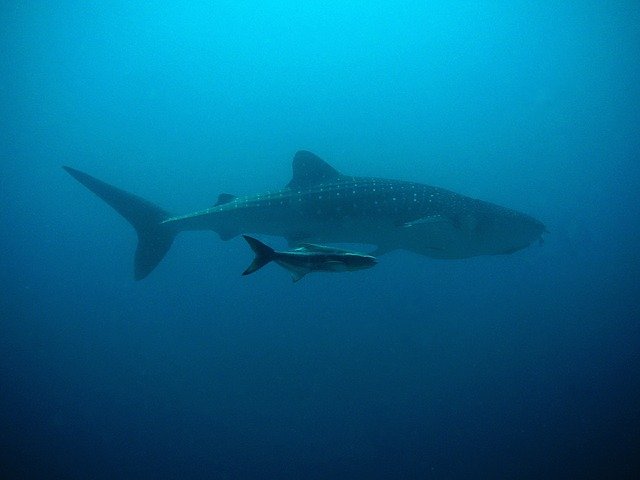
29. Where Are Whale Sharks Found – Whale Shark Location
- Whale Sharks are found in the pelagic zone (the open ocean zone or open sea) of all the tropical oceans.
- They usually avoid the greater depths of oceans and prefer the open sea.
- At various coastal sites, their seasonal feeding gatherings occur. For example, at the:
- Eastern and southern parts of South Africa
- Gulf of Tadjoura (Djibouti)
- Saint Helena Island (South Atlantic Ocean)
- Gladden Spit (Belize);
- Ningaloo Reef (Australia)
- The Gulf of Kutch, Saurashtra coast, and Lakshadweep (India)
- Donsol, Pasacao, Batangas and Southern Leyte (Philippines)
- Utila (Honduras)
- Bahía de los Ángeles, Isla Holbox and Isla Mujeres in Yucatán (México)
- Ujung Kulon National Park, Flores Island and Cenderawasih Bay National Park (Indonesia)
- Maamigili Island (Maldives)
- Nosy Be (Madagascar)
- Tofo Beach (Mozambique)
- The Pemba, Mafia, and Zanzibar islands (Tanzania)
- The Ad Dimaniyat Islands (Gulf of Oman)
- Al Hallaniyat Islands (Arabian Sea)
30. Whale Shark Range
- Generally, the range of Whale Sharks is restricted to an altitude of approximately 30 degrees.
- However, they can dive to the depths of 4,219 feet (1,286 meters).
31. Where Do Whale Sharks Live – Whale Shark Habitat
- Whale Sharks prefer to live in the warm waters of all tropical oceans.
- They are rarely found in waters with temperatures lower than 21-degree centigrade.
32. Whale Shark Migration
- Whale Sharks are migratory.
- Breeding and feeding are the possible reasons for their migration.
- Whale Sharks migrate in summer to the food-rich waters nearby Yucatan Peninsula (Mexico).
- In spring, they migrate to the central west coast of Australia.
- Other significant spots of their migration include Japan, Belize, South Africa, Honduras, Seychelles, and the Galapagos.
- No one knows exactly how Whale Sharks perceive when and where to discover the food-rich waters.
- Scientists are now using different techniques and technologies like photo-identification, conventional tagging, and satellite tags to determine where the Whale Sharks come from and where they go.
- The recorded longest distance of Whale Sharks migration in 37 months is 13,000 km (8,000 miles), and about 24 to 28 km (15 to 17 miles) in one day.
33. Where Can You Swim With Whale Sharks – Best Place To See Whale Sharks
- Some of the best places to see and swim with Whale Sharks are:
- Cabo San Lucas, La Paz and Baja California, México
- Isla Holbox, Isla Mujeres, Isla Contoy, Cozumel and Cancun, Mexico
- Donsol Bay, Philippines
- South Ari Atoll, Maldives
- Mafia Island, Tanzania
- Cenderawasih Bay, Indonesia
- Gladden Spit, Belize
- Ningaloo Reef, Australia
- Koh Tao, Thailand
- Tofo Beach, Mozambique
- Wolf Island and Darwin Island in Galapagos Islands, Ecuador
34. Whale Shark Maldives
- In the Maldives, Whale Sharks reside throughout the year in a marine protected area, South Ari Atoll.
- From May to December, Whale Sharks mostly accommodate the western locality of the Indian Ocean archipelago and till April they move to the east side.
35. Galapagos Whale Shark
- Whale Sharks are found in Galapagos (Ecuador) throughout the year.
- However, the season between June and December is the best time to dive along with the Whale Sharks in Galapagos.
36. Whale Sharks Philippines
- In the Philippines, Donsol Bay is the region where Whale Sharks are found.
- Generally, Whale Sharks arrive here between November and June but increase in number from February to April.
37. Whale Shark Atlanta
- In Atlanta, Whale Sharks have been kept in captivity in Georgia Aquarium.
- Nowadays, there are four Whale Sharks in the Georgia Aquarium, two male and two female, all were imported from Taiwan.
38. Whale Sharks Australia – Whale Sharks Ningaloo – Whale Sharks Exmouth
- In Australia, the Ningaloo Reef and Exmouth are the sites where most of the Whale Sharks arrive for feeding during March and July.
39. Whale Sharks Mexico – Holbox Whale Sharks – Whale Sharks Cancun
- In Mexico, Isla Holbox and Cancun are two of the sites where Whale Sharks are found.
- They arrive here for feeding and mating and mostly reside from the mid of May to the mid of September.
40. Whale Sharks Belize
- In Belize, Whale Sharks are found in Gladden Spit Area from March to June.
- Here, Whale Sharks can be sighted most consistently in April and May.
41. Whale Shark In Captivity
- In 1934, Japan was the first country that attempts to keep a Whale Shark in captivity.
- Similarly, Japan was the first country that initiates the attempt to keep Whale Sharks in an aquarium (Okinawa Churaumi Aquarium) in 1980.
- Several other countries that kept Whale Sharks in captivity include:
- Kagoshima City Aquarium, Notojima Aquarium, Kinosaki Marine World, Yokohama Hakkeijima Sea Paradise, and Oita Ecological Aquarium in Japan.
- Aquaplanet Jeju in South Korea
- Chimelong Ocean Kingdom, Guangzhou Aquarium, Dalian Aquarium, Yantai Aquarium, and Qingdao Polar Ocean World in China.
- National Museum of Marine Biology and Aquarium in Taiwan.
- Atlantis, The Palm in Dubai.
- Thiruvananthapuram Aquarium in India.
- Georgia Aquarium in the Atlanta city of USA is the world’s largest aquarium that keeps Whale Sharks in captivity.
- The recorded Whale Shark that has lived more than 18 years in captivity, as of 2017, is a specimen in the Okinawa Churaumi Aquarium.
42. How Many Whale Sharks Are Left – Whale Shark Population
- There is no reliable current estimation of the global population of Whale Sharks.
43. What Do Whale Sharks Eat – Whale Shark Diet – Whale Shark Food
- Whale Shark is one of the three filter-feeding shark species.
- They are fed by plankton which includes krill, copepods, larvae of the Christmas Island red crab, fish eggs, and other tiny squids and fishes.
44. How Much Does A Whale Shark Eat
- The estimated amount of plankton a juvenile Whale Shark consumes per day is about 46 pounds (21 kg).
45. Whale Shark Stomach
- Whale Sharks have an interesting feeding mode.
- They can turn their stomach outwards through their mouth.
- Their stomach can eject the large materials that do not pass through their filter pads.
46. How Do Whale Sharks Eat – Whale Shark Eating – Whale Shark Feeding
- A Whale Shark eats a large number of plankton by opening its mouth very wide.
- The excess water that a Whale Shark gets along with plankton simply passes out through gills from their body.
- If they accidentally swallow large-sized materials, they spit out it back through a process called gastric eversion.
- Whale Sharks can turn out their stomach and eject all the large-sized materials retained by their filter pads.
47. What Eats Whale Sharks – Whale Shark Predators
- In 1996, juvenile Whale Sharks were found in the stomachs of a Blue Shark and a Blue Marlin.
- Adult Whale Sharks do not have natural predators due to their huge size.
- Human beings are the most deadly predators of Whale Sharks.
- In Southeast Asia, they are targeted for the commercial trade of their meat.
- In Hong Kong, the fins of Whale Sharks are utilized in soups.
- The oil obtained from their liver is also a great reason for their hunting, which is used as a waterproofing agent for wooden boats.
- However, most of the countries had banned the hunting of Whale Sharks.
48. Whale Shark Attack
- The huge size of Whale Sharks usually discourages any predators to attack them.
- However, juvenile Whale Sharks are usually attacked by large predators like whales and some aggressive sharks.
49. Whale Shark Eats Human – Do Whale Sharks Eat Humans
- Whale Sharks do not eat humans.
- They are filter-feeders and things of large size can’t pass through their filter pads.
- If a human accidentally enters the mouth of a Whale Shark, the Whale Shark’s stomach would spit him back out through the mouth.
50. Whale Shark Diving
- Whale Sharks sometimes dive to the depths of approximately 5,900 feet (1,800 meters).
51. Whale Shark Skeleton
- Whale Sharks have a cartilaginous skeleton as it belongs to the group of fishes called Chondrichthyes.
- The skeleton of Chondrichthyes fish is made entirely out of cartilage rather than bone.
- Other fish belonging to this group include sharks, skates, sawfish, and rays.
52. Whale Shark Adaptations
- Whale sharks are well adapted to their living environment.
- They have gills for breathing and their bodies can glide within the water.
- They can catch food during swimming by opening their mouth very wide and having special filter pads which retain unwanted material.
- Whale Sharks have sensors along their body length, which is an interesting adaptation discovered by scientists.
- The sensors enable them to detect pressure changes in their surrounding waters.
- We can say that these sensors provide a sixth sense to a Whale shark as it acts as a backup vision and due to it they can detect large objects in their surrounding.

53. Is A Whale Shark A Fish
- Yes, Whale Shark is a fish as it has all the characteristics of a fish.
54. Are Whale Sharks Endangered – Whale Shark Status
- IUCN (International Union for Conservation of Nature) considered Whale Sharks as endangered because:
- Their population in the Indo-Pacific ocean has been thought to reduce by about 63% in the previous 75 years.
- While in the Atlantic ocean, their number has decreased more than 30%.
55. Why Are Whale Sharks Endangered
- Whale Sharks have a long lifespan and become sexually mature very late (at the age of 30 years).
- As they are found in open seas and swim at low speed near the surface of the water, so usually they collide with vessels that often leads to their death.
- Bycatch losing is also a reason for their endangeredness.
- Illegal hunting by fisheries is the main reason for Whale Sharks’ endangerment, as their skin, fins, liver oil, and meat are utilized for several purposes.
56. Is A Whale Shark Bigger Than A Blue Whale
- Whale Shark is the largest fish on the earth, while Blue Whale is the largest animal ever existed on the earth planet.
- A Blue Whale is several times bigger than a Whale Shark.
57. Do Whale Sharks Sleep
- A Whale Shark is obligate ram ventilation or buckle pumper.
- It means it must stay within the water to get oxygen through its gills.
- Recent studies indicate that the spinal cord causes the Whale Sharks (and other sharks) to swim, not their brain.
- So it is believed, that the brain of some always moving sharks may experience a less-active period, a period of rest.
- However, sleeping like humans is impossible for sharks.
58. Are Whale Sharks Carnivores
- Carnivores are animals who consume meat or the flesh of other animals as a source of energy and nutrients.
- Whale Sharks are filter-feeders of plankton – living organisms or their eggs or larvae.
- So we can say that Whale Sharks are filter-feeding carnivores.
59. Interesting Facts About Whale Sharks – Whale Shark Fun Facts
- Whale Shark is a species of “shark”, it is called a Whale Shark due to its enormous size like most Whales.
- Whale Shark is the largest fish that has ever existed on earth, however, it feeds on small creatures of the oceans.
- A Whale Shark consumes about 2 to 3 kg of plankton per hour while filtering about 600,000 liters of water.
- Whale Sharks have sexual dimorphism and the females have a larger size than males.
- Each Whale Shark has an individual and unique pattern of stripes and spots.
- Whale Sharks are migratory, they migrate for about 8,000 miles usually for feeding and mating.
- You can swim with Whale Sharks as they are found in the open sea just beneath the surface of water or in a few meters depth.
- The fully open mouth of a Whale Shark is so wide that four divers can swim into it at the same time.


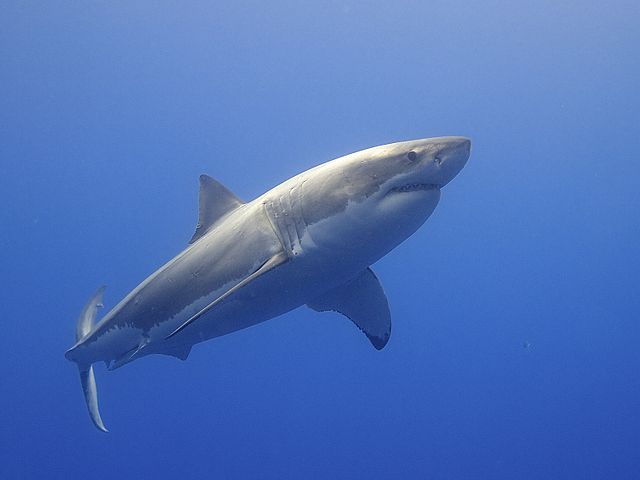
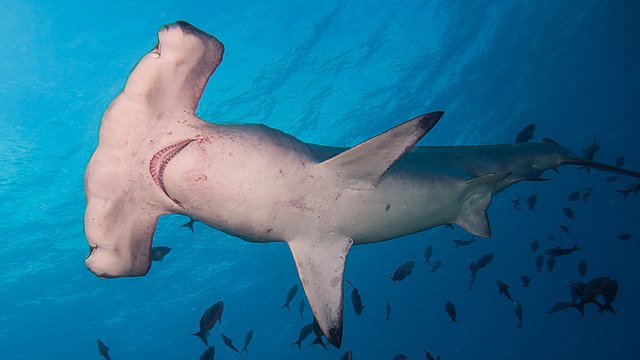








this should have games of the whale shark
It has cool facts WOW!